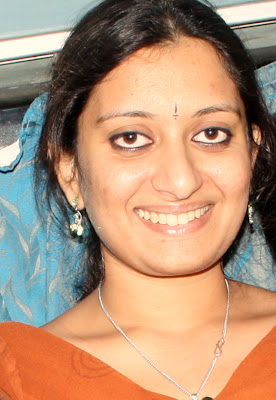 Pancha Jaati, a periodic column featuring five readers (artistes, connoisseurs, aspirants) who put forth their questions to a chosen veteran in the field of Arts, begins the series with the legendary dancing couple The Dhananjayans.
Pancha Jaati, a periodic column featuring five readers (artistes, connoisseurs, aspirants) who put forth their questions to a chosen veteran in the field of Arts, begins the series with the legendary dancing couple The Dhananjayans.

Naatyaachaaryas Shri V.P.Dhananjayan and wife Smt Shanta Dhananjayan, popularly known as the Dhananjayans, are among the most accomplished dancers and teachers of Bharatanatyam. Both disciples of the legendary Rukminidevi of Kalakshetra, through
Bharata Kalaanjali, an institution they founded in 1968, have trained number of students, who have established themselves in different parts of the world. They are recipients of many National and International awards, including the highest civilian award Padma Bhushan in 2009.
 Dr. Janaki Rangarajan Dr. Janaki Rangarajan
Bharatanatyam Dancer & Educator, USA
Dr. Janaki Rangarajan is one of the senior most disciples of Dr. Padma Subramanyam. She has been associated with Nrityodaya on all its premier productions. Currently in the United States, she runs her institute Nritya Niketan and holds the post of Secretary at the Indian Dance Educators Association (IDEA).
|  Question: There is a lot of discussion these days about "Innovation in Bharatanatyam". What does Innovation mean to you? Question: There is a lot of discussion these days about "Innovation in Bharatanatyam". What does Innovation mean to you? |
The Dhananjayans: Please refer to my book Dhananjayan on Indian classical dances. You may get more insight into the subject. However, innovation means new ideas, creative emergence of evolutionary changes, which is imperative in human endeavors. Past is the foundation for the present to build a future. With out eschewing the aesthetic values of dignity & divinity of arts if artistes can bring refreshing ideas in movements and choreographic designs they may be accepted as innovations. Over the years/centuries artistes have brought in a lot of changes in the format and execution, they are all part of innovations. As far as I am concerned there is no controversy or discussions on innovations.
|
 Question: Please brief us about the origin and development of nattuvanaars. Question: Please brief us about the origin and development of nattuvanaars. |  Prasanna Kumar Prasanna Kumar
Nattuvanar, Banglore
Prasanna Kumar is a senior Nattuvanar and percussion artiste of Bangalore. Having innate skill and expertise in his chosen field, he has accompanied innumerable artistes across the country. He is actively involved in conducting workshops on nattuvangam for dancers.He also constantly interacts with the younger generation of artistes.
|
The Dhananjayans: Naatyaachaaryas who taught, trained and conducted the performances of sishyas are called Nattuvanars in Tamizh language. This is simple explanation I can give. Going into history and development of the word, may go into pages. Please refer to some of the books like Nitya Sumangali, Silappadikaaram etc.
|
 Katyayani Thota Katyayani Thota
Kuchipudi Dancer & Research Scholar, Hyderabad
Katyayani Thota has a Masters in Performing arts from the University of Hyderabad and is currently pursuing her PhD from the same University on the subject – Kuchipudi dance in/and Cinema. She is an Engineering graduate and a research scholarship holder from the UGC.
|  Question: While in the Rasasutra, and most other theories concerning the rasaananda, what happens to the audience is described in great detail. But what about the dancer? It is said that unless the dancer enacts a particular rasa through a role, with complete involvement, the sattva of the audience cannot be tapped into. My problem is with the term, "complete" involvement. While performing a sequence, the dancer must of course feel one with the character and be immersed in it. But they also have to keep in mind the laya, tala, what the singer is singing, and in today's performance scenario also the lighting, space, placement etc. So what is this complete involvement that is talked about so much? Question: While in the Rasasutra, and most other theories concerning the rasaananda, what happens to the audience is described in great detail. But what about the dancer? It is said that unless the dancer enacts a particular rasa through a role, with complete involvement, the sattva of the audience cannot be tapped into. My problem is with the term, "complete" involvement. While performing a sequence, the dancer must of course feel one with the character and be immersed in it. But they also have to keep in mind the laya, tala, what the singer is singing, and in today's performance scenario also the lighting, space, placement etc. So what is this complete involvement that is talked about so much? |
The Dhananjayans: To start with please read my Rasa chapter in my book “Dhananjayan on Indian classical dances”. A performer –however technically versatile he or she may be, does not become an artiste unless the performer touches the Rasikas heart or sensitivities. Involving does not mean one forgetting oneself and merging with a character, but make belief that the actor is one with the character. An actor should be always conscious of the self. This status is obtained when the actor knows fully well every nuance of character being portrayed(poem, meaning, the poet’s feeling and ideas, musical expression, context, situation, who, why, how etc everything thread bear) - this is what we call involvement. If one knows these aspects well, involvement comes automatically, then the performance become effective communication, touching the heart of the audience.(Please understand Rasa cannot be enacted, it can only experienced. so the audience's enjoyment or experience may be termed as RASA or tasting something cooked.)
|
 What are the advantages and disadvantages of being a solo dancer and a dancing duo? Which do you think is more challenging? What are the advantages and disadvantages of being a solo dancer and a dancing duo? Which do you think is more challenging? |  Shijith Nambiar & Parvathy Menon Shijith Nambiar & Parvathy Menon
Duo Bharatanatyam dancers, Chennai
Shijith Nambiar and Parvathy Menon are couple dancers, and alumina of Kalakshetra. While Shijith has been a faculty and doubles as a percussionist and Nattuvanar, Parvathy, born and brought up in Kuwait has a post diploma from Kalakshetra.
|
The Dhananjayans: Advantage in solo performance: One need not adjust to coordinate movements, synchronize steps, postures and positions; Also freedom of expression and movements, and get undivided attention of the audience.
Disadvantage: More taxing, cannot relax – choreographically cannot exploit a single body to design visually appealing patterns. Limitation in making Nritta- angahaaram.
Advantage: The disadvantages in a solo can be advantages in a duo performance and vise versa, especially if they are man and woman, even better for well trained couples like Shijith and Parvathi. Visually a duo (couple) is complimentary to each other and audience’s interest can be sustained.
Disadvantage: When it comes to fee and honorarium ONE payment for two (unfortunately the organizers do not realize the existence of two equal artistes on the stage). A duo performance is more challenging than a solo, because couple is kept under tender hooks. More practice is needed; if one slacks a bit, people will start to compare, which may morally affect any one of the duo.
|
 Monica Kondepudi Monica Kondepudi
Mother of a Bharatanatyam student, USA
Monica Kondepudi is a mother of a 5 year old student of Bharatanatyam – Samhita. Recently moved from Hyderabad to the United States, Monica has had training in Bharatanatyam in early stages of her career.
|  Question: There are several styles in Bharatanatyam like Vazhuvoor, Pandanallor , Tanjore and so on. What is the original style of bharatanatyam from which all the other styles have been evolved? What are the rules or the guidelines using which a new style can be created in Bharatanatyam? Question: There are several styles in Bharatanatyam like Vazhuvoor, Pandanallor , Tanjore and so on. What is the original style of bharatanatyam from which all the other styles have been evolved? What are the rules or the guidelines using which a new style can be created in Bharatanatyam? |
The Dhananjayans: Basically there are two styles GOOD & BAD. Good styles follow Angasudham (or follow the ten qualities enunciated in the Saastras). The names you mentioned are created by individual Nattuvanars to establish individual supremacy or identity to their place where they belong to. Later people unnecessarily created these style differences with a competitive attitude.
Now with the establishment of a systematic training method in Kalakshetra there is an amalgamation of these so called styles, emerging into good styles, eschewing some of the vulgar and unaesthetic elements crept in during a particular period when Naatya was relegated to a particular section of the people, making it mere cheap entertainment. Now things have changed for better.
We are trying to establish a uniform style and system and syllabus, quite successful I should say, with out claiming any superiority or inferiority. We should look at it with an open mind and try to appreciate good in every style, after all artistes are creative, each one has the right to create. In the process each generation gets the benefit of novelty in educative enlightenment and entertainment.
|





